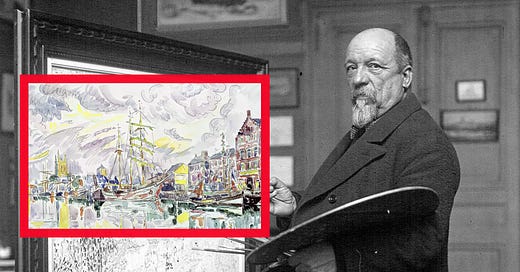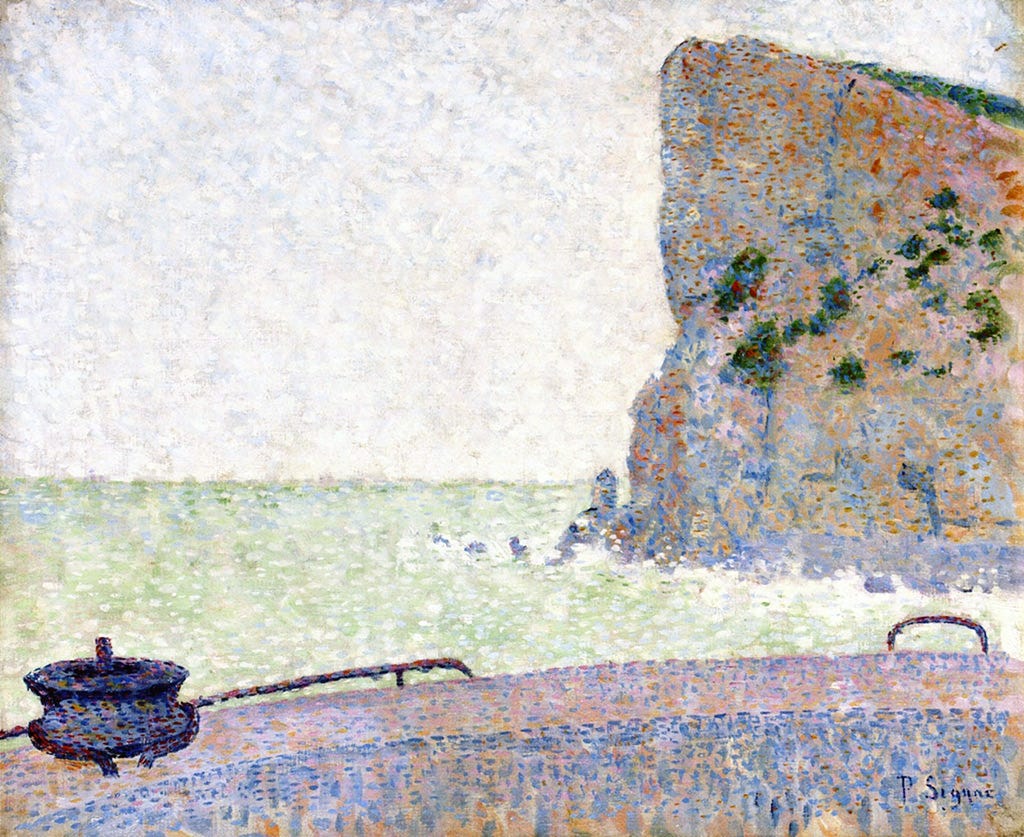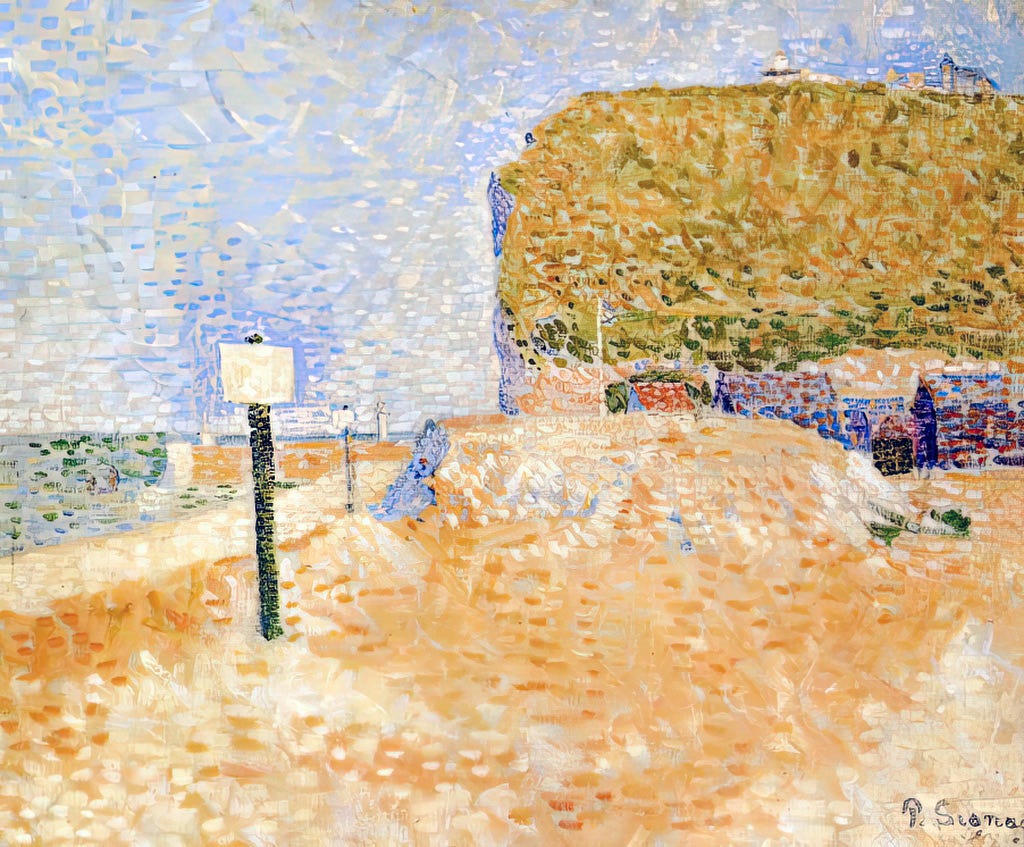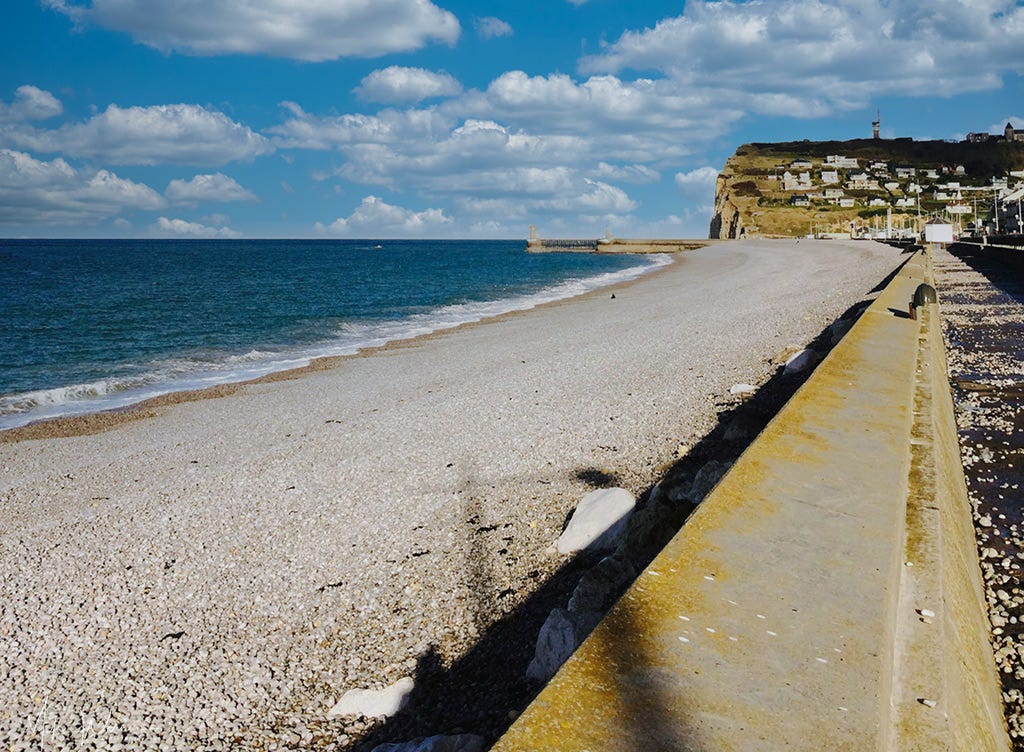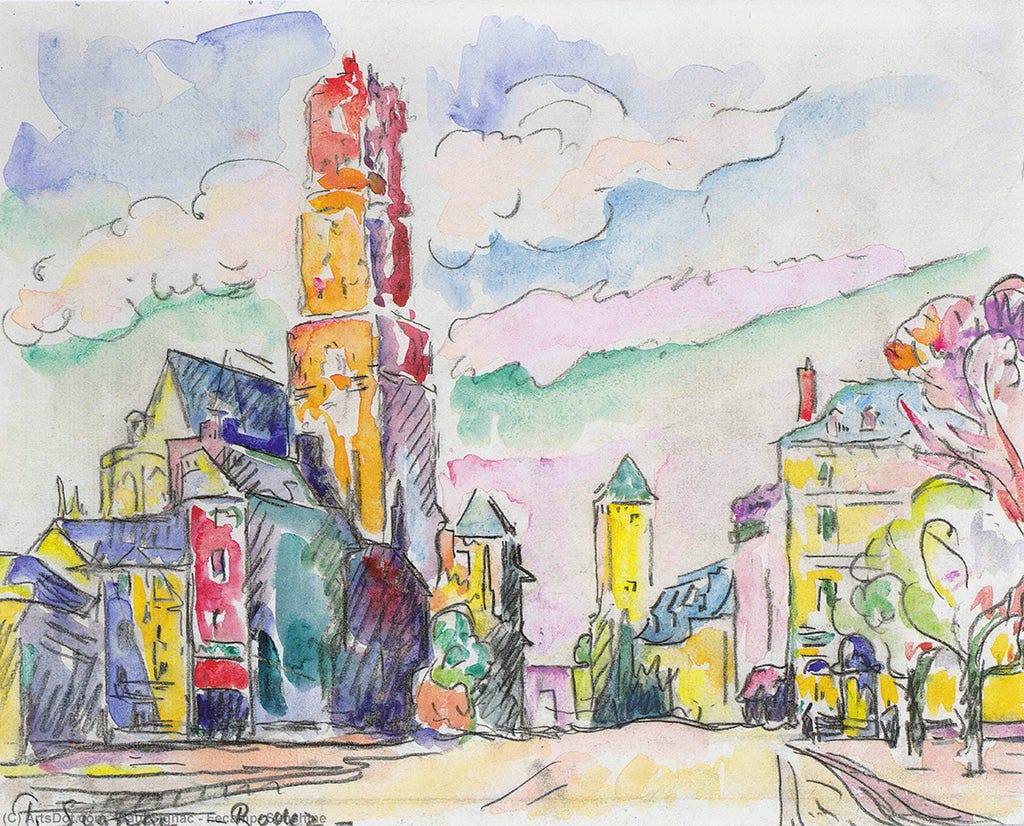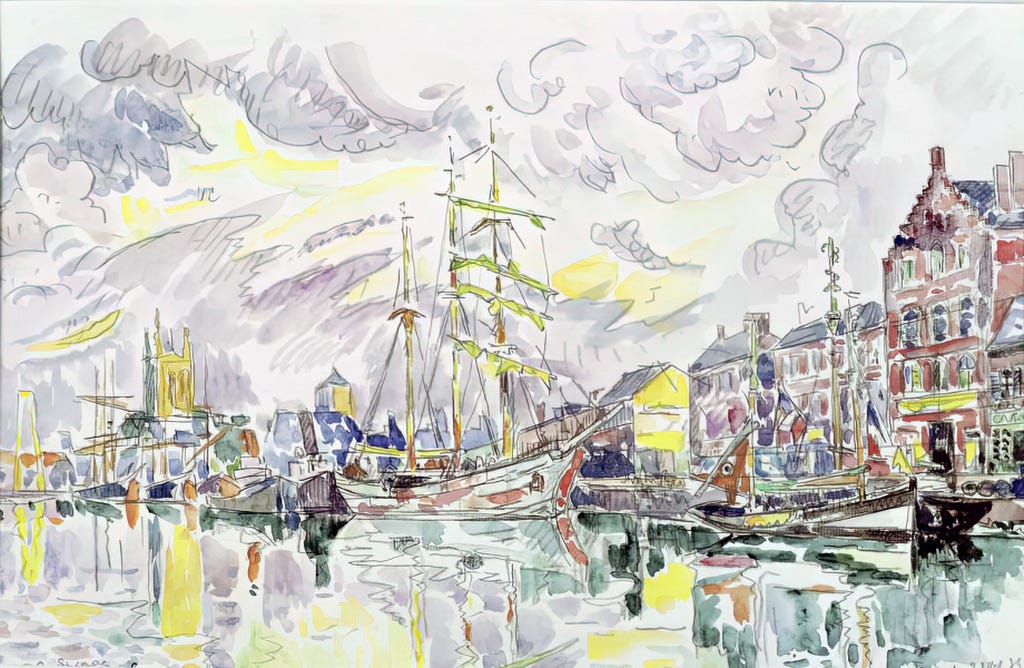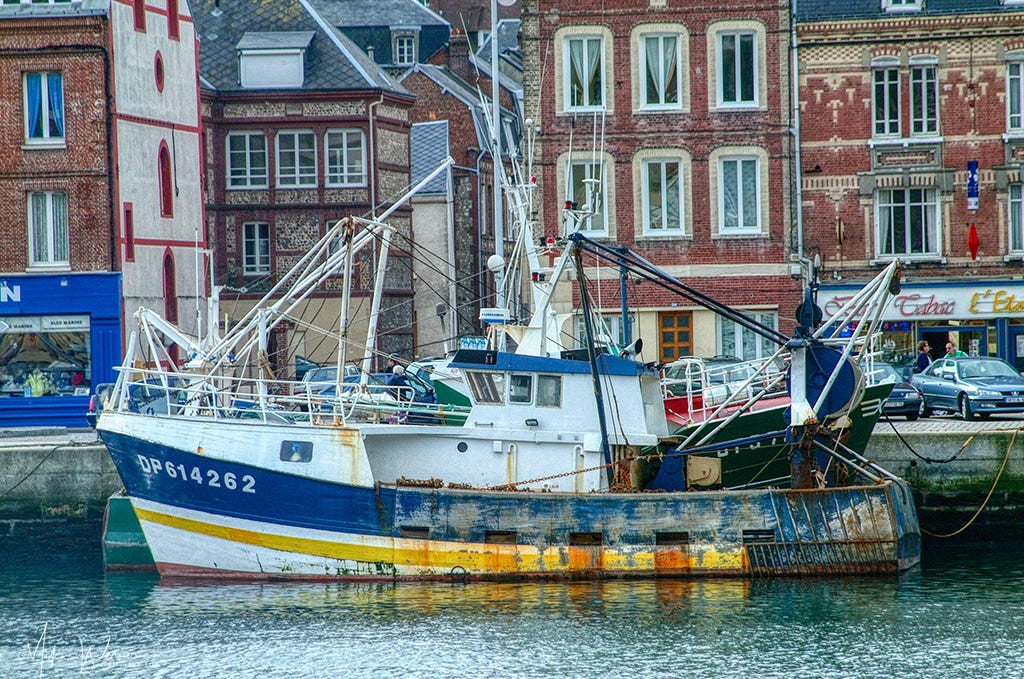Paul Signac was a French Neo-Impressionist painter, born on November 11, 1863, in Paris, and he died on August 15, 1935, in the same city. He was one of the principal figures in the development of the Pointillist technique, a method of painting pioneered alongside Georges Seurat, in which small dots of pure color were applied to the canvas to create vibrant, luminous compositions.
Signac initially trained as an architect but turned to painting after being inspired by the works of the Impressionists, particularly Claude Monet. In 1884, he met Georges Seurat, and together they developed and refined the Pointillist method, also known as Divisionism. This technique was based on scientific theories of color and optical mixing, aiming to achieve greater brightness and harmony in painting.
His early works, influenced by Seurat, display meticulous, precise dot applications, but over time, he adopted a freer, more expressive style with larger, more visible brushstrokes. Unlike Seurat, who often painted urban and social scenes, Signac was particularly drawn to maritime subjects, seascapes, and ports, which he depicted in a dazzling array of colors.
In addition to being a painter, Signac was an important writer and art theorist. He wrote D’Eugène Delacroix au Néo-Impressionnisme (1899), a book that articulated the principles of Neo-Impressionism and its connection to earlier artistic movements. His theoretical contributions influenced artists like Henri Matisse and the Fauvist movement.
Signac was also a key figure in the art world as a patron and advocate for young artists. He played a crucial role in supporting the careers of many painters, including Matisse and André Derain. From 1915 until his death in 1935, he served as president of the Société des Artistes Indépendants, an organization that promoted avant-garde artists and provided a platform for experimental movements.
Throughout his career, Signac traveled extensively across France and the Mediterranean, painting in locations such as Saint-Tropez, Venice, and La Rochelle. His love for sailing is evident in many of his works, where boats, harbors, and the shimmering effects of water are central themes.
His legacy endures through his vibrant, innovative approach to color and composition, which influenced later movements like Fauvism and abstract art. His works are now housed in major museums around the world, including the Musée d’Orsay in Paris and The Metropolitan Museum of Art in New York.
NOTE: You can see the pier on the left and on top of the cliff, the chapel and farm that still exists today.
TODAY: The boats are moored at the Berigny Quai in the Berigny Basin. On the quai you will still find many shops and restaurants.
These were all the paintings he made in Fecamp, Normandy that we found.

